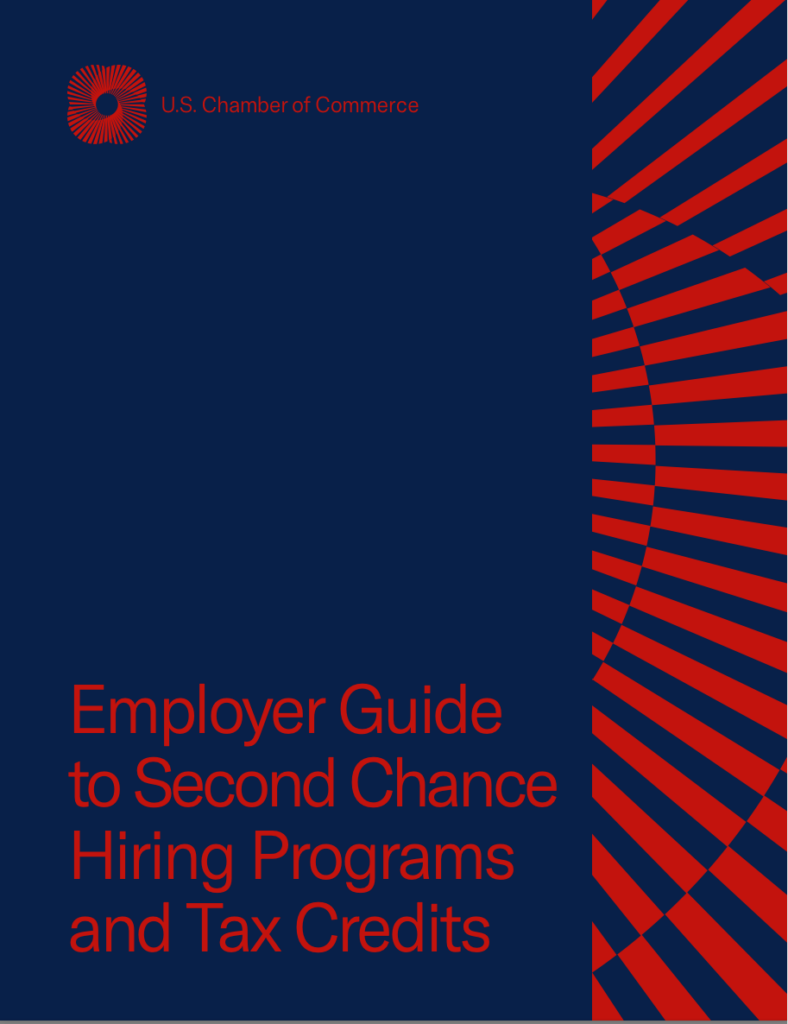
The U.S. Chamber of Commerce continues to address the nation’s workforce shortage in a variety of ways. One of the most important of these is by encouraging companies to consider instituting second chance hiring practices.
As its latest effort, the organization – which represents thousands of businesses and is said to be the nation’s largest lobbying group – convened the Reimagining Futures Second Chance Employment Forum in Washington, D.C., in September. The U.S. Chamber of Commerce event brought together everyone from private employers to public policy makers. Presenters included U.S. Representative Danny Davis (D-Ill.); Nan Gibson, executive director of the JP Morgan Chase & Co. Policy Center; Dan Letchinger, senior vice president, Growth Brands, Dave’s Killer Bread and Canyon Bakehouse Gluten Free at Flower Foods; and keynote speaker Richard Bronson, vice president, 2C Workforce Solutions.
Second chance employment practices offer companies a competitive advantage, according to Letchinger.
“It would be foolish and fiscally irresponsible to overlook a whole pool of talent because of some terrible decisions that many of them made when they were young,” he said at the event. “There are a lot of fiscal reasons for second chance employment. It’s a competitive advantage in a competitive space. And we know more and more consumers are looking to buy and support brands whose values they share. Being at the forefront of second chance employment leadership has been critical for Dave’s Killer Bread to resonate with consumers.”
During the forum, the U.S. Chamber of Commerce unveiled two new resources for employers – an updated second chance hiring data center and an employer resource guide.
Data center statistics support second chance hiring
The U.S. Chamber of Commerce data center provides information to support second chance hiring. And it shows how increasing employment for formerly incarcerated individuals or those with a criminal record creates opportunity, drives economic growth and strengthens the nation’s social fabric.
Among the data center’s notable findings:
- The years of the Covid pandemic created a labor shortage that affects nearly all industries in every state. The U.S. labor force participation rate is currently at 62.7%. In other words, only 62.7% of the working-age, non-institutionalized population is either employed or actively seeking employment.
- A high proportion of the potential workforce is sidelined because of high conviction rates, imprisonment or community supervision. An estimated 1.25 million Americans are currently in prison, and 3.7 million are on probation or parole.
- The unemployment rate for people with previous justice system involvement is about 30%. This compares to an overall unemployment rate of 4.2% in August 2024.
- Those in reentry who are able to hold a job for one year after release experience a recidivism rate of just 16% over three years. Those who are unable to maintain employment, however, experience a 52% recidivism rate over that same time period.
Employer guide spells out benefits of second chance hiring
The other employer resource announced at the forum is the Employer Guide to Second Chance Hiring Programs and Tax Credits. This guide offers three ways that employers can benefit by initiating second chance hiring.
It can benefit employers by allowing them to:
- Claim the Work Opportunity Tax Credit, which equals 40% of up to $6,000 in wages paid to qualified individuals.
- Take advantage of the U.S. Dept. of Labor’s Federal Bonding Program, which protects employers against employee fraud or dishonesty during the first six months of employment. There is no cost to the employer for this program.
- Partner with service providers that participate in the Growth Opportunities grant program. This program gives grants of up to $5.1 million to organizations that prepare youth and young adults impacted by community violence for employment.
In spite of the fact that an increasing number of companies are considering second chance hiring, there is still resistance to the practice. Anyone who thinks their company might be a good candidate for second chance hiring can use the U.S. Chamber’s data center’s findings and its Employer Guide to Second Chance Hiring Programs and Tax Credits to convince their management of the benefits of this endeavor.

